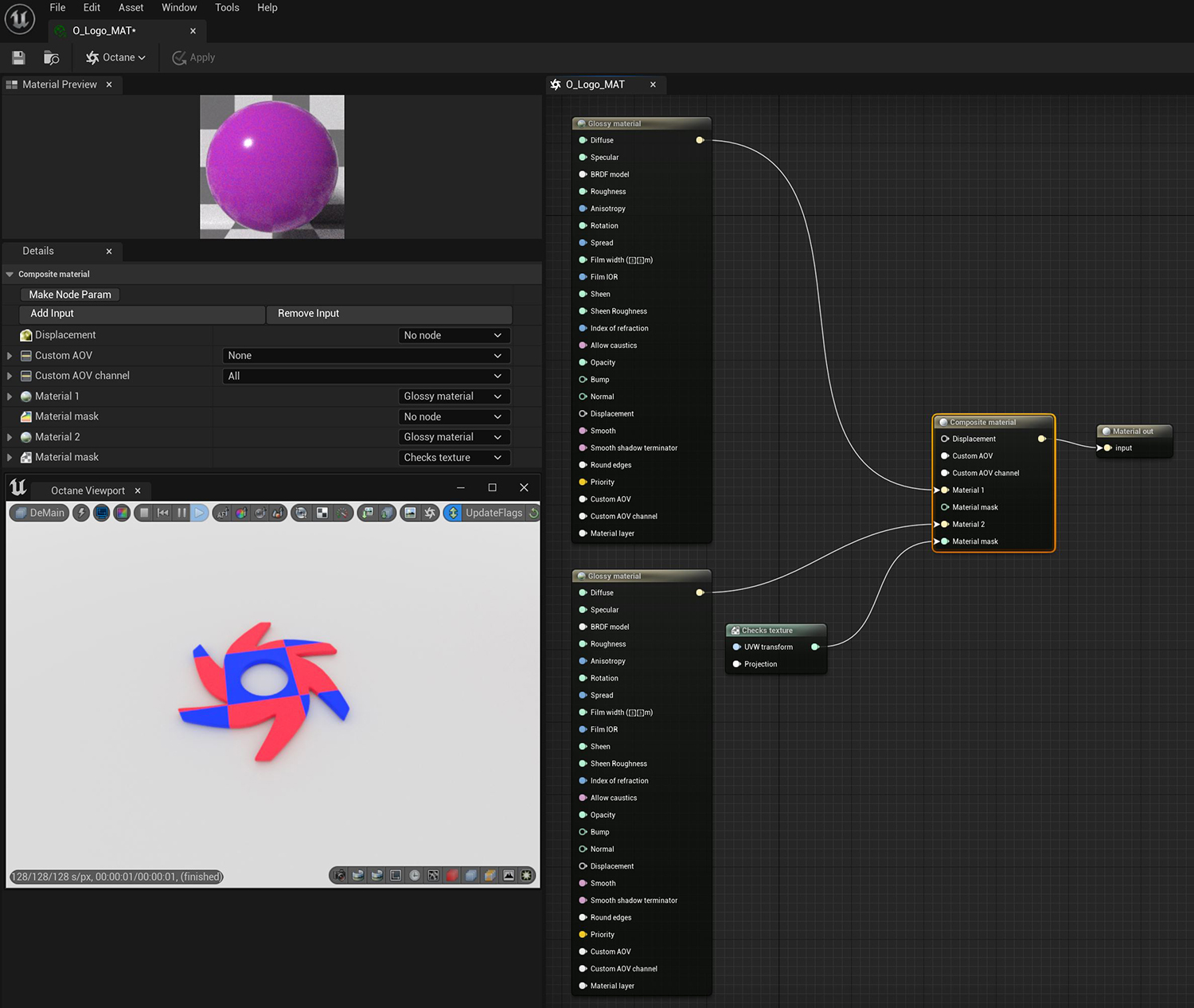
The Composite material is similar to the Mix material, but offers more functionality. By default, the Composite material provides mixing capabilities for two materials through material mask inputs and the ability to add a Displacement texture. You can add more Material inputs by clicking on the Add Input button.

Figure 1: A Composite material node used to mix a red and blue Glossy materialUsed for shiny materials such as plastics or metals. with a Checks node as a mask
Add Input - Adds a new MaterialThe representation of the surface or volume properties of an object. input to the end of the node.
Remove Input - Removes the last Material input.
DisplacementThe process of utilizing a 2D texture map to generate 3D surface relief. As opposed to bump and normal mapping, Displacement mapping does not only provide the illusion of depth but it effectively displaces the actual geometric position of points over the textured surface. - Displacement for the Composite Material surface.
Custom AOV - Writes a mask to the specified custom AOV.
Custom AOV Channel - Determines whether the custom AOV is written to a specific color channel (R, G, or B) or to all the color channels.
Material - The Material input. When several MaterialsA set of attributes or parameters that describe surface characteristics. are used, the first Material pin becomes the base layer.
Material Mask - Controls the Material’s opacity using an Input map. If a mask is not connected, the Material's opacity is used.